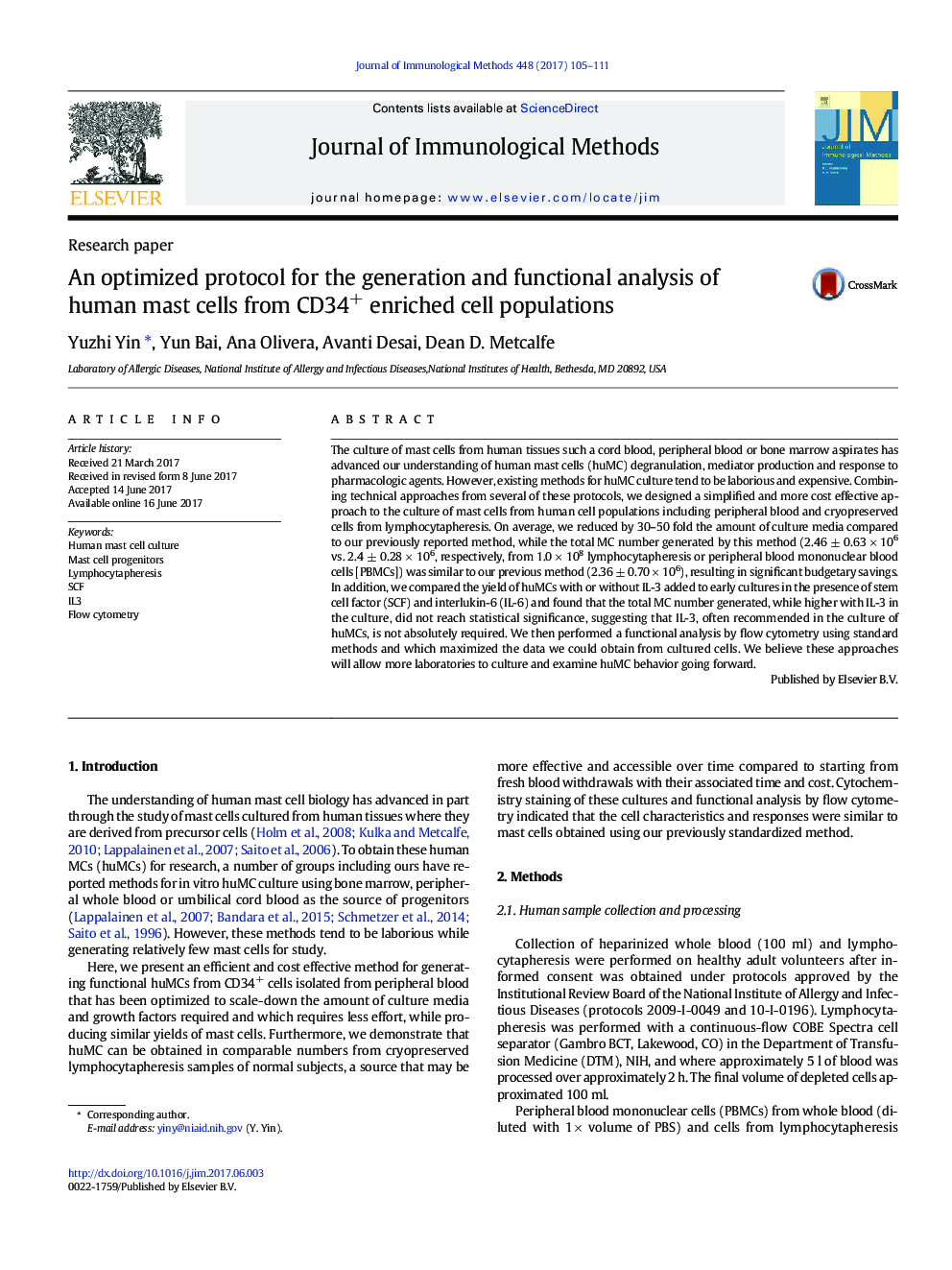| کد مقاله | کد نشریه | سال انتشار | مقاله انگلیسی | نسخه تمام متن |
|---|---|---|---|---|
| 5521981 | 1545661 | 2017 | 7 صفحه PDF | دانلود رایگان |

- Less labor intensive and more cost effective method to culture human mast cells.
- Starting sources are cells from lymphocytapheresis and or blood.
- SCF and IL-6 are the critical growth factors.
- Mast cell activation and degranulation may be followed by flow cytometry.
The culture of mast cells from human tissues such a cord blood, peripheral blood or bone marrow aspirates has advanced our understanding of human mast cells (huMC) degranulation, mediator production and response to pharmacologic agents. However, existing methods for huMC culture tend to be laborious and expensive. Combining technical approaches from several of these protocols, we designed a simplified and more cost effective approach to the culture of mast cells from human cell populations including peripheral blood and cryopreserved cells from lymphocytapheresis. On average, we reduced by 30-50 fold the amount of culture media compared to our previously reported method, while the total MC number generated by this method (2.46 ± 0.63 Ã 106 vs. 2.4 ± 0.28 Ã 106, respectively, from 1.0 Ã 108 lymphocytapheresis or peripheral blood mononuclear blood cells [PBMCs]) was similar to our previous method (2.36 ± 0.70 Ã 106), resulting in significant budgetary savings. In addition, we compared the yield of huMCs with or without IL-3 added to early cultures in the presence of stem cell factor (SCF) and interlukin-6 (IL-6) and found that the total MC number generated, while higher with IL-3 in the culture, did not reach statistical significance, suggesting that IL-3, often recommended in the culture of huMCs, is not absolutely required. We then performed a functional analysis by flow cytometry using standard methods and which maximized the data we could obtain from cultured cells. We believe these approaches will allow more laboratories to culture and examine huMC behavior going forward.
Journal: Journal of Immunological Methods - Volume 448, September 2017, Pages 105-111